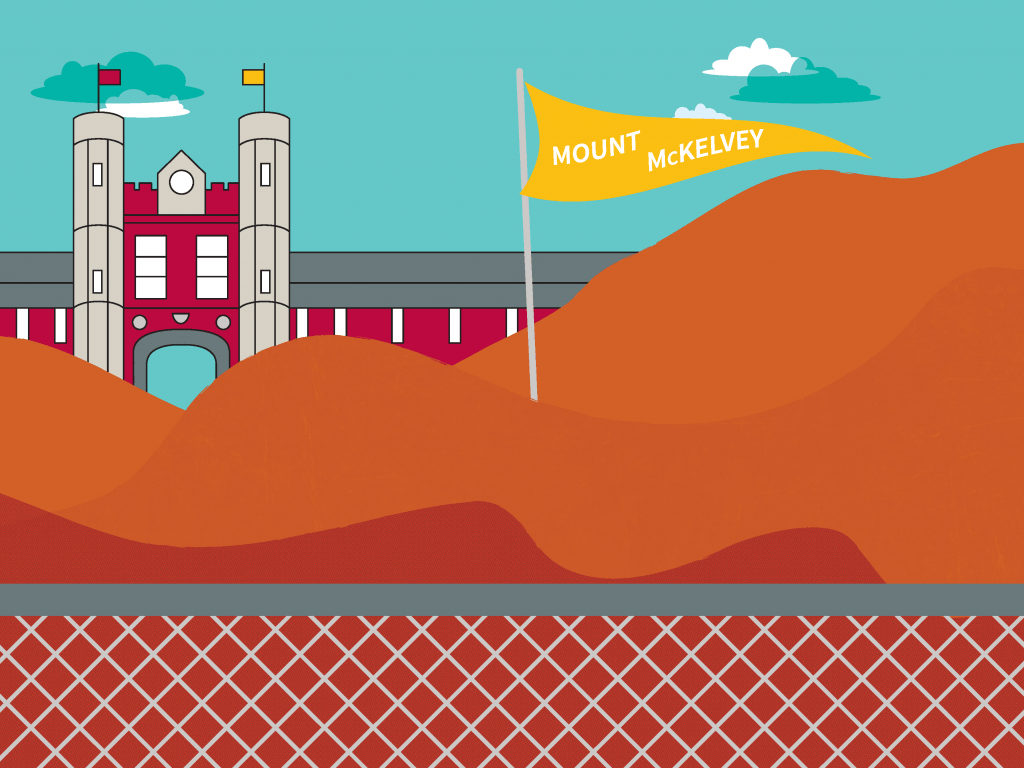By Diane Torian Keaggy
In two years, the east end of Washington University in St. Louis will be a dazzling vision of modern architecture and lush landscaping.
But today, our front lawn is a cross between a “Mad Max” set and the surface of Mars. It’s loud and it’s dusty, but the crew is getting the job done.
Since June 5, crews have been working 16 hours a day to dig a 40-foot hole in front of Brookings Hall. But how? With what? And where is all of that dirt going? Here are some answers to these questions.
Trucks

During the peak of excavation, more than 1,000 truckloads of dirt left campus every day. Some of it has been stockpiled at North Campus where it will stay until it can be used as backfill on the project. But the vast majority of the dirt is being transported to fill and storage sites in Illinois.
Amount of dirt

When complete, crews will have excavated 330,000 cubic yards of dirt. That’s the equivalent of 66,651,428 gallons of milk, 450 million Venti Starbucks, or if you prefer, 4.5 million kegs of beer. Either way, don’t drink the dirt.
Length of project

The first load of dirt left campus on June 5. Since then, crews have been running two shifts a day, breaking only when the heat index surpasses 105 degrees. Digging is set to be completed by Sept. 1, maybe earlier.
Mount McKelvey

Located on what will soon be the site of James M. McKelvey, Sr. Hall, “Mount McKelvey” has an elevation of 20 feet and is composed of excavated dirt that will one day shore up new buildings. In the meantime, Mount McKelvey serves as a de facto parking lot for equipment and other materials.
Geology of site

The Missouri Department of Natural Resources has identified several types of clay in the state. But to project director Ryan Moss, there are only two: good clay and bad clay. Bad clay, or high-plastic clay, expands and causes buildings to shift.
“That orange dirt that everyone around here knows does not drain well,” Moss said. “Good clay, or low-plastic clay, is perfect for backfill because it gives you good compaction.”
Equipment

Different types of dirt require different types of equipment. The site’s three excavators scoop the clay. But once crews hit shale, they employ Caterpillar D8 with a ripper, a claw-like attachment that breaks up the rock. Limestone requires a breaker, which acts as an enormous jackhammer.
Check it out for yourself on the CampusNext webcams.
Utility footprint

Before crews broke ground, engineers mapped every electric, sanitation, water and gas line using historic data. In the field, crews used new location technologies like hydro excavation and old-fashioned techniques like hunting and pecking.
